Eurail Passes are famous as a way to save money while exploring Europe, but they are also confusing and often misunderstood. They are still an amazing money-saving tool for certain types of travelers, and not a wise idea for most others. Before Europe introduced dynamic rail pricing (like airfares, where the price varies depending on when you buy it), a Eurail Pass was an easy way to save money since all tickets had fixed prices that were generally fairly expensive. These days most travelers can save far more money just by buying their train tickets at least a few weeks in advance.
That said, Eurail Passes are still great for longer trips and especially for people who like to make plans as they go. Dynamic rail pricing made advanced tickets much cheaper, but it also made last-minute tickets MUCH more expensive. Below we will discuss Eurail Passes and whether they are a good idea for your trip or not.
Disclosure: This is a reader-supported website and some of the links are affiliate links where a small commission is paid to help keep this site going.
Note: This article was written in 2012 and has been continuously updated since then, so all information is current as of April, 2024.
Eurail 2024 changes: New countries and a mobile version
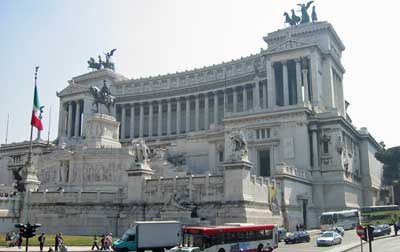
Aside from that it’s just the normal fact that they have updated the timetables as of December 2023 and have a few promotions going on, but those usually don’t happen over the busy summer season.
Eurail passes are now available in a mobile version
Until very recently, Eurail Passes were only available in paper form and they were quite confusing at first. You’d get a pass with a series of empty boxes on it and you’d need to enter your trip before you’d use your pass each day and then have the first conductor verify it. If you lost your ticket (and this was not uncommon), it was a whole ordeal to attempt to get a replacement.
Again in 2024 Eurail offers a fully mobile version that is delivered instantly to your mobile device with no delivery fee. And if you somehow lose your phone, you can resume using your Pass on your replacement with no extra headache. This is MUCH more convenient in every way and as long as you can keep track of your phone you’ll always have your train pass handy.
If your trip will be 2 weeks or less, a Eurail Pass probably won't be worth it

Eurail Passes are ideal for travelers on longer trips, and especially those who don’t want to plan all of their destinations and dates far in advance. If you have your itinerary pretty much planned out and you don’t require much flexibility, you’ll be far better off just locking in your dates and buying your train tickets as early as you can. Again, they can be surprisingly cheap if you buy 2 to 4 months out.
If you are age 27 or younger, a Eurail Pass is probably worth it

With this in mind, if you are lucky enough to still be 27 or younger, you should seriously think about getting a Eurail Global Pass Youth, partly because the sense of freedom instantly gets more expensive at age 28. The age cutoff was 25 until recently, so this change is a great deal for anyone who will be 26 or 27 at the start of their trip.
You aren’t guaranteed to save money by buying a Youth Eurail Pass, but chances are good that you WILL save money and you’ll definitely save a lot of hassle as well. Especially now that Eurail Passes come in a mobile form, it’s even that much more convenient to just hop aboard any train that is about to leave the station and not worry about buying or even having a ticket. Especially for young people, it can be really fun and exhilarating to literally just walk into a train station with your backpack and look at the departure board and then decide where to go at that moment.
If you are age 60 or over, a Eurail Pass could also be great value
Another fairly recent change is that anyone who is 60 years or older at the start of the use of a Eurail Pass now gets 10% off the normal adult fare. That new discount is going to make this a great value for many travelers who might have been on the fence about buying a full-price pass before.
>>>Check prices on Eurail Passes
If you are planning on traveling in 1st Class anyway, a Eurail Pass is probably worth it
Most 2nd Class trains provide similar comfort and legroom to Business Class airline seats, or at least close enough, so for most people it’s not worth the added expense for 1st Class. However, if you are rich or elderly or fear contact with strangers, a 1st Class Eurail Pass is probably worth it no matter what.
Not only do you get much more comfort and legroom in 1st Class, with only 3 seats across instead of 4, but there is another advantage to 1st Class on European trains. Since it’s mostly business travelers and wealthy people traveling in 1st Class, the carriages are almost always mostly empty except in the mornings and late afternoons between large cities. In 2nd Class the only available seats might be two seats in an 8-seat cabin with all the other seats taken up by a loud family or a group of rowdy friends. In 1st Class you are all but guaranteed a peaceful ride, and usually plenty of empty seats from which to choose.
A hidden Eurail Pass benefit: Making extra stops on travel days for free

Brussels in particular is one I recommend a short stop in because the small historic center around what they called the Grand Place is amazing and gorgeous, while the rest of the city is rather boring by European standards. With a Eurail Pass you can jump off the train in Brussels and explore the city center for a few hours (luggage storage is cheap and easy) and maybe have lunch, and then hop on a later train to complete your journey to Amsterdam. There are opportunities like this on many if not most trips between larger cities, and if you buy the point-to-point tickets you have to stay on the train you booked.
Another example is the high-speed train between Barcelona and Madrid, which takes about 2.5 to 3 hours in each direction. There are some interesting cities in between, but in this case you could take a morning train from Barcelona to Madrid and then check into your accommodation, and then hop on another train from Madrid to Toledo, which takes about 30 minutes and costs €14 each way. Toledo is a historic and fascinating town, but it’s also pretty small and you can explore the main sights in an afternoon. With a Flexi Eurail Pass where you buy a certain number of travel days, you can save more money by adding on these sorts of nearby stops on travel days.
If you'll be touring major cities within ONE country, a single-country pass might be perfect, and Second Class passes are available for all ages
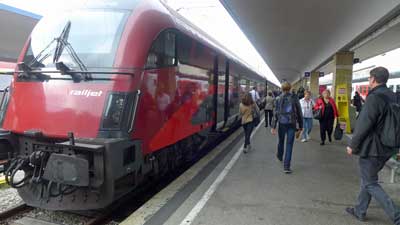
Single-country passes are still available and they MIGHT be good value for you, but it depends on which country and how much traveling you’ll be doing. If you plan on going all over a larger country such as Germany, France, or Spain, and especially if you like to make plans as you go, a Single-country pass for one of those might be your best deal. On the other hand, smaller countries (such as the Netherlands) or countries where train tickets are already fairly cheap (such as Italy) might be harder to get value out of. Long story short, for single-country passes you really need to check fares of the places you plan on going and see how they add up compared to the pass.
>>>Check prices for Single Country Passes
Eurostar (between London and Paris or Brussels or Amsterdam) tickets are now included for Eurail Pass holders for a €30 reservation fee
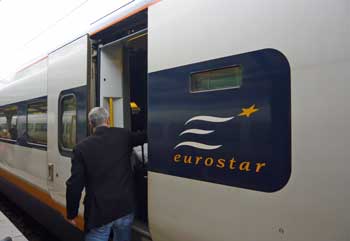
Our recent tests show that Eurostar fares one-way from London to Paris can be as low as €49 if you book about 3 months out, or as expensive as €214 for the same seat if you wait until the day of travel to buy. Round-trip/return tickets can be even cheaper if there is a promotion running.
>>>Check Eurostar prices
If you are on a really low budget, a Eurail Pass isn't a good idea
Here’s the thing. As we’ll discuss below, there are many potential benefits to Eurail Passes, and they will often save you money, but they do cost a lot and they only really save you money when traveling in the more expensive countries.
So let’s say you have a flight to Rome and then US$2,000 to last you a month after you arrive. Buying a Eurail Pass before you go would help you see a lot in that month, but you’d practically need to sleep in parks for your funds to last the whole time. You’d be better off moving slowly in the southern countries, or just in Italy itself, as a way to have the best holiday on your budget. You might also be tempted to use a Eurail Pass mostly on night trains so you can save the cost of a hotel or hostel, but those aren’t ideal for most of us.
The cheapest way to get around Europe by rail is to buy all train tickets online at least a couple months in advance. The fares are low, but they are non-refundable and non-changeable. See how far in advance you should buy train tickets to get those attractive fares.
If more than a little of your travel will be in eastern Europe, a Eurail Pass isn't a good idea
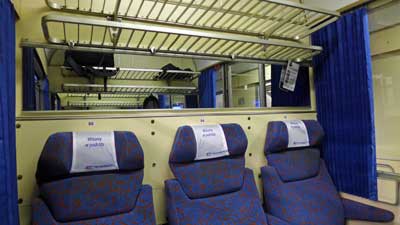
The good news is that the trains operating in this region, and the buses that operate alongside and/or where trains aren’t running, are quite cheap. So if any significant part of your trip will be into this region, a rail pass doesn’t make sense.
Basic types of Eurail Passes
Long gone are the days of the simple options, replaced by specialized passes that are meant to appeal to different styles. It should be pretty easy to figure out which is best for you, and then keep going down the page to decide if it’s worth it at all.
Eurail Global Pass – 4,5, or 7 days within 1 month or 10 days within 2 months
Until recently the minimum number of travel days with 10 days within 2 months, but now you can buy as few as 4 days within 1 month for about €200 to €250 (for first class). This can actually be an interesting strategy if you are planning many shorter and cheaper trips (like within Italy or Eastern Europe), and also 4 or 5 longer trips such as Berlin to Amsterdam. This way you can buy only 4 or 5 travel days and only use them for your most expensive travel days, and just pay as you go or buy cheap advance tickets for your other journeys.
Eurail Global Pass – 15 to 90 consecutive days
This variation allows for unlimited travel on the system for between 15 and 90 total days. They are really only a good idea for people who are certain they are going to travel very often, with much of it being in the north of Europe. The problem with them is that if you really try to get your money’s worth, you will probably ruin your trip by spending too much time on trains in general. On the other hand, if you will be in Europe for 2 or 3 months and plan on traveling around a lot, you can get a LOT of use out of a longer pass. The 3-month pass is around €900 so it’s literally about €10 per day. Imagine going back and forth between Berlin and Munich or Barcelona and Madrid for €10 per day!
One Country Pass
Obviously these are for travel within one country only. Again, they can be great deals if you plan on extensively moving around one particular country.
Where to buy your Eurail Pass
Eurail Passes are cheapest and easiest to buy online, primarily from two main sources which offer all the same products at the exact same prices:
This is a reliable company based in the Netherlands but with fulfillment offices in the US and Ireland. Price of Travel is a partner with this company, and if you use the links of this site we earn a small commission to help keep this site online. Eurail.com is usually cheaper than RailEurope (discussed below) by the way.
They were founded in the 1930s and are based in New York, but owned primarily by the French and Swiss rail companies. They offer free shipping (2 to 3 business days) on all orders of US$399 or more, although now that a mobile version is available, this is meaningless. Price of Travel is a partner with this company, and if you use the links of this site we earn a small commission to help keep this site online.
Reservations on European trains for rail pass holders
For most of the fastest trains between major cities you’ll need to reserve a seat even with a rail pass. It can usually be done just before you leave and the cost is usually around €5. Here’s a full list of which European trains require reservations and which don’t.
Reservations are required on all intercity (longer distance) trains in or involving France, Spain, Switzerland, and Italy. For most trains in Germany, Austria, Netherlands, Belgium, and most of eastern Europe, you can usually find trains that don’t require seat reservations. Often, if you don’t leave until after 9:30am or so, you can ride on any train with no seat reservation, but you have to research each leg to be sure.
How to determine which trains require seat reservations, and also get schedules
You can click on the link just above this section for a list of countries and their seat-reservation policies, but in some cases it’s actually a bit more complicated than that. For example, you can generally ride without a seat reservation on fast ICE (Inter City Express) trains in Germany if you depart after 09:30 in the morning. They do this to free up seats for business travelers who pay full fare, and they don’t mind filling up seats with rail pass holders on trains leaving a bit later.
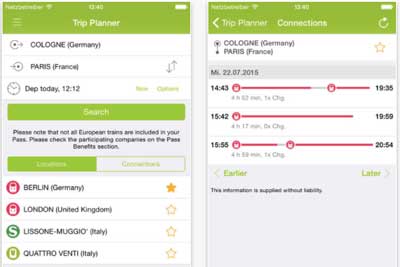
Night trains in Europe are making a comeback
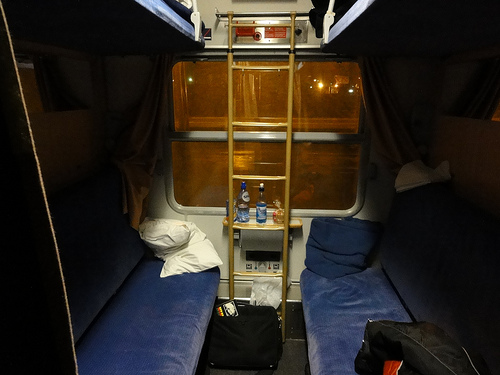
Fast forward to 2024 and night trains are not only expanding service, but they are very trendy. Some of it is nostalgia for the older way of getting around, but most of it is for environmental purposes combined with European hatred for the “low cost airline” experience with RyanAir and Easy Jet etc.
Personally I’m still not a fan of night trains because I find it difficult to sleep on them since they often get decoupled at interim stations in the middle of the night and then coupled onto other trains coming from other places, and I can’t sleep through any of that. But still, they are worth looking into and they are fun to try at least once.
A bit of warning that they tend not to be cheap and even if you have a Eurail Pass you’ll almost certainly want to book a sleeping cabin with a bunk or couchette, and that will come at an extra fee. On the other hand, if you are the sort of person who can sleep sitting upright in a normal seat, then that won’t cost any extra on most overnight trains.
Factors to consider when thinking about any Eurail Pass
Assuming you know which Eurail Saver Pass option is the best one for your type of trip by now, we’ll go over the main factors that should help you decide whether it’s the best idea for you.
Eurail Passes are best for standard ‘medium length’ journeys
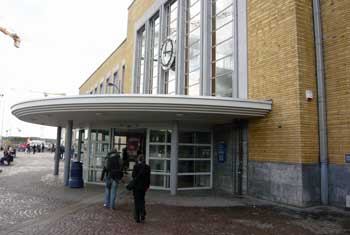
However, if you are determined to travel between Rome and Paris, it’s about a 14-hour journey that will almost certainly be overnight. In this case, a cheap plane ticket is probably better, although taking shorter hops on the train is even better, so spend a day or two in Milan or Lyon on the way instead.
And of course, if you prefer to stop in various small towns between the big ones, then a Eurail Pass won’t pay off, except for the traditional kind for unlimited travel in a given period.
Eurail Passes are better value in northern Europe, France, and Spain, and poor value in Italy
Once you do a bit of research you’ll quickly learn that train tickets (and almost everything else) are much more expensive in Germany, Netherlands, Denmark, Sweden, Norway, and Finland than they are in Greece, Italy, Portugal, and Spain. With this in mind, the regional passes can make sense if you are spending time in the south, but the Global Passes almost certainly won’t. Train tickets in Spain used to be fairly cheap, but in recent years they’ve added new high-speed trains between the major cities, and these are quite expensive.
Unlike most other countries, Italy really subsidizes its train tickets so they are quite reasonable even on travel day, and very cheap if you buy a month or more in advance. For example, you can go between Rome and Florence for around €49 if you buy on travel day, and as little as €19 if you buy well in advance. In most other countries, fares are double or triple that much for similar rides.
So consider your planned itinerary. If more than half of it is in the Mediterranean countries then look into a Regional Pass or just buy tickets as you go, because they tend to be pretty cheap. But if you are planning on spending at least half your time in Paris and places to the north of it, then a Eurail Pass is probably a money saver because those tickets are expensive.
Trains are almost always better than planes
Flying sucks, even in Europe
Until you’ve experienced the joy of traveling around Europe by train you might be tempted to “maximize” your time by flying low-cost airlines between each city. This would be a mistake. In order to get truly cheap airfares you have to purchase long in advance, buying non-refundable tickets. You might also have to commit to flights in the very early morning or in the late evening, because cheap tickets on convenient flights sell out quickly.
And again, most European airports are around an hour outside of the city. They are often on the main train lines, which helps, but still you have to deal with the madness of security and also try to get there at least two hours early. From one city center to any other city center it’s about 5 hours minimum, even if they are close, and those are pretty miserable hours.
Train travel is a positive experience

Not only are all the seats comfortable on trains, but you also have an interesting view most of the time. Better still, trains deposit you in the heart of every city, which is usually the neighborhood with the cheapest hotels and food. It’s a wonderful feeling to step off a relaxing train ride, buy a hot dog or sandwich at a local shop, and then be in your hotel room only about 10 minutes later.
Eurail Passes are better than train tickets alone
As someone who enjoys the process of crunching numbers and looking for value, I have to also mention that I’d buy a Eurail Pass even if it seemed like it would cost a bit more than the individual tickets. With a pass you get an extra element of freedom that is worth a lot more than you might expect until you’ve used one.
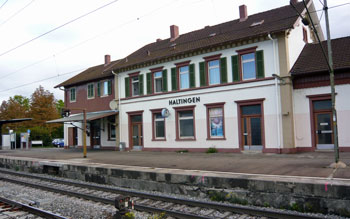
Let’s say you are heading from Amsterdam to Hamburg tomorrow morning. The 09:00 train you planned for might seem a bit ambitious after a long night out, so you can instead opt for the 10:00 or 11:00 train. As long as you walk into Centraal Station 10 or so minutes before departure, you are on. If you are flying you can’t change your ticket, and if you are buying train tickets as you go you have to be in line at the international desk at the train station at least 30 minutes early, and even then you might miss it if they are busy.
Freedom and getting to feel like a big shot
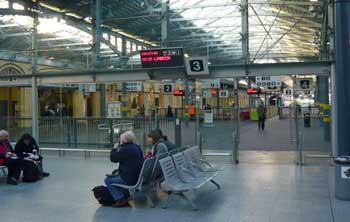
Let’s say you are staying at a hostel in Brussels, and two groups of new friends suggest that you go along with them to their next stops. One group is going to Bruges, which is a short and cheap journey, so you can join them by buying individual tickets (unless you have the unlimited pass, making it free). Then you restart your trip from Bruges, on to your next destination. The other group is headed to Berlin on a night train, which is long and expensive, but with a Eurail Pass you don’t even have to think about the cost. On you go, just like a rich person.
Buying a Eurail Pass is great for those who might run out of money
We all know people who keep meticulous track of every penny they spend, and who are always putting money away for a rainy day. And we all know people who can take a US$100 “entertainment fund” and burn through almost all of it in just a few hours. For the first type of person, a Eurail Pass can help you keep track of expenses, but it’s really the second type of person these are best for.
It’s sad to hear about people who have big plans to see their dream destinations, but they run out of money for transportation halfway into the trip, so they have to just stay put until they fly home. It happens. Locking in your major transportation costs before you leave home, and probably saving money in the process, is a wise move for anyone who isn’t as disciplined as they’d like with their money.
>>>Check prices on Eurail Passes
Bottom line: If you want to keep travel costs down, your choices will usually be a Eurail Pass or buying tickets at least a month or more early
In the last few years, almost every long-distance train ride in Europe has switched to a pricing system similar to low-cost airlines. In other words, tickets go on sale 2 to 6 months ahead of time at very low prices, and they keep getting more expensive as the train fills up and the date approaches. For most trips where a rail pass is possible, this is how things stack up:
Cheapest possible way: Buy advanced (non-refundable, non-changeable) train tickets at least 30 days in advance
Next cheapest way: Buy a Eurail Pass and make seat reservations as you go, usually only a day or less in advance.
Most expensive way: Buy train tickets as you go, or less than a week in advance.
Thinking about it this way should make the choice a bit easier. If you are the type who likes to plan each day and travel segment long before you even leave home, then buy tickets online for the best prices. This can be the best strategy for most shorter trips (10 days or less) because you simply don’t have enough time to change many things as you go anyway.
Buying a Eurail Pass won’t be quite as cheap, but you are buying a LOT of flexibility with the extra money. If you dream of making up your plans as you go, or even making up your plans just a few days in advance, this is almost always your best bet.
But if you wait too long, and just show up looking to buy train tickets as you go, they are going to cost a fortune. As recently as only a few years ago all seats would be the same price on many rail systems, so you could always just wing it. When each country computerized its rail systems so they can sell advanced tickets cheaper, they also had to keep track of seat reservations, so the whole pricing structure had changed to favor advanced ticket buyers and rail pass holders over those who’d prefer to just hop on any train as it is leaving the station.
Have a rail pass or itinerary question of your own?
It wasn’t planned but scores of people began asking me rail pass and itinerary questions at the bottom of this article and a few others. I’m happy to keep answering them and now I’m trying to organize them better as well so they are easier for other people to find.
If you have a question about specific types of European rail passes, please ask it in the comments below.
But if you have a question more about a European itinerary or other non-rail-pass questions, please click over to the European itineraries Q & A article and ask in the comments of that one.

Roger,
A group of 4 are traveling to europe in mid July 2015, our flight arrives in Frankfurt July 17 and going to Munich that day. Then we are on a Alps motorcycle trip from July 19-July 25. July 26 munich to Innsbruck, then evening train to Vienna. July 28 night train Vienna to Venice. July 29 night train Venice to Prague, flying home from Prague. Was looking at the Eurorail select pass 6 days within 2 months. Would that be your recommendation?
Robyn,
It looks to me like you’ll only be taking trains on 4 different days (Frankfurt to Munich, Munich to Innsbruck to Vienna, Vienna to Venice, and Venice to Prague. In that case, a Eurail Pass wouldn’t be good value because the minimum number of travel days for a Global Pass is 5. It sounds like your dates and destinations are firmly planned, and if that’s the case I’d buy those train tickets online as soon as possible. The fares will be quite reasonable if you do, while they would be expensive if you buy shortly before you go or on travel day.
Also, the train from Frankfurt to Munich isn’t too expensive, although the other ones could be pricey if you don’t buy soon. By the way, the night train from Venice to Prague will take a bit over 14 hours, which is a long time to spend on a train, even if you sleep part of the way. And going through the Alps north of Venice is one of the most beautiful train rides in Europe, so doing it at night would be a shame. Still, I’m sure it’ll be a wonderful trip.
Here is information on how to buy European train tickets online for the best fares. Let me know if you have any other questions. -Roger
Roger,
Thanks for the reply, while are dates are not firm, we are still deciding on going to Innsburck(swarovski) and what city next. WE have decided that we want to go to Venice, Vienna and Prague where we will fly home from. With the dates, we didn’t want to waste a day traveling to prague as I hear it is beautiful and would like 2 days there.If you have suggestions as to route different than ours that would be great.
Robyn,
Prague is indeed beautiful and very interesting as well, so I’m sure you’ll enjoy it. The route you have in mind is probably the most efficient one, so I don’t really have a suggestion for a better way of connecting those cities. The main complication is that there are no fast trains over the Alps going directly north from Venice, and it’s quite a long way. The fastest train has a change in Munich, by the way. Have a great trip. -Roger
Dear Roger, first of all many many thanks for this website. You are an angel for me now!
Me and my wife have got a ticket offer, and will be flying to Paris on June 4th and will return from there on June 14th.
I wish to be at Berlin on June 6th, for watching Champions League Final, and no other destination is finalised. Please note that this is our first Europe trip, and flight tickets are not changeable.
So I am planning to make the best out of these 10 days. My plan is:
Landing at Paris on 4th 7.00am.
4th night & 5th @ Amsterdam
6-8 Berlin
9-10 Munich
11-12 Innsbruck / Zurich
13-14 back to Paris and return flight at @14th 10.00am.
But I am afraid this may become very hectic for us. Please help me to make a better itenary, and suggest better routes.
Which pass will be most suitable for us ?(we boh are below 26)
I was thinkink of rental car with a different route plan, as both of us have have driving license. Which will be more cheaper: Eurail pass or rental car?
Thanks in advance.
Habeeb,
The Champions League quarter finals are going on as I type this, and I’m jealous that you’ll be in Berlin for the finals. 🙂
On a 10-day visit to Europe I don’t think I’d want to include more than 4 total cities, especially with larger cities that are on your list. Fortunately, I think your plan will be wonderful with one small change, which is to save Innsbruck and Zurich for a future trip. To be honest, I don’t really recommend either of those cities for most travelers unless they have a specific reason to go there. Innsbruck is primarily a ski resort town, without any real interesting sights. For future reference, Salzburg is a wonderful tourist city and so is Vienna. And Zurich is a pretty generic European city that is also incredibly expensive. If you want to see why everyone raves about Switzerland, go to Interlaken and/or Lucerne.
The other 4 cities on your list are among the most enjoyable in Europe, and they will be easy to visit as a group.
But first, you don’t want to rent a car in Europe to visit cities. Not only are the cars expensive, but the fuel is very expensive, and parking in city centers is also difficult and expensive. European countries specifically make driving pricey and difficult to encourage people to take public transportation, so fortunately they do public transport very well. Even if you DID drive from one city to another, you wouldn’t want to drive around while sightseeing, and you’d have to pay quite a bit just to park for those days.
Here’s what I recommend:
Land in Paris and then take a train straight to Amsterdam by train in about 5 hours, leaving straight from the airport. Spend 2 nights in Amsterdam, as it’s more compact than the other cities on your list.
Then take a train to Berlin, which will take about 6 hours. Spend 3 nights there.
Then take a train to Munich (6 hours) for 2 or 3 nights.
Then take a train back to Paris (6 hours) for the remaining 3 or 4 nights. For comparison, driving from Munich to Paris would take over 8 hours, so trains are faster as well.
There isn’t really a rail pass that would help you on a trip like this because they are mainly meant for longer trips that have at least 6 destinations. Your best bet will be to buy all of those train tickets as soon as possible, as the price will keep going up as the travel dates approach. Here is how to buy European train tickets online to get the best prices. If you buy soon they will still be fairly cheap, but if you wait until just before you leave they will be surprisingly expensive.
As always, let me know if you have any other questions. And enjoy that final. -Roger
Dear Roger,
Thanks a lot for your help.
We have booked all the 4 itineraries, using the links given in your post.
And it all cost me lesser than I expected.
Thanks again. Keep going. May God bless you.
Hi roger,
I have heard many great things about your advice from friends. I am currently planning my trip to Europe in a little over a month. Although I have run into the issue of how I should travel around.
I have booked a cheap flight from Amsterdam to London . Although I am also visiting France, Spain, Italy and Switzerland
In more detail I am travelling to Paris, Marseilles and nice, Barcelona, Venice,Milan,Florence,Rome and Naples and Interlaken.
This is from the 28th of June to 31st of July so it is in peak, high price time and I just want the most cost effective travel. Would it be worth getting a train from London to Paris and then using a ten day travel euro pass from there
Any help would be great thanks
Alana,
It’s very nice to hear that my advice has been recommended and I’ll try not to disappoint. Yes, you will be traveling in peak summer season, although you may also be aware that many of the non-coastal cities in Europe actually clear out to some degree during July and August. There will be thousands of other tourists joining you on the rails, but most Europeans actually go somewhere around 1-July and stay there the entire month (or for the entire month of August), so it won’t be as bad as you might fear. Nice and Barcelona will be packed with Europeans in July, however.
You’ll definitely want to travel by train. You have two cheaper options and one expensive one. The cheap options are to buy your train tickets at least a month or more in advance (the sooner the better), or to buy a Global Eurail Flexi-Pass of 5 to 10 travel days within 2 months (and buy a few of the cheaper rides individually). The expensive option would be to buy all of the train tickets as you go. For the most part, European train tickets go on sale about 3 or 4 months in advance, and the price goes up as more seats are sold. So early tickets can be surprisingly cheap, and last-minute tickets can be amazingly expensive.
However, the train tickets between the major Italian cities are fairly cheap even at the last minute, so you could buy those in advance for even less, or just pay as you go and they’d still be a bit cheaper than buying an additional travel day on a Eurail Pass. If you feel comfortable locking in all of your train trips soon, it will be the cheapest way of going. The longer you wait, the more a Eurail Pass makes sense. If you have a Eurail Pass you’ll still need seat reservations on some of those trains, but you should be able to get those on travel day or the day before.
In other words, a rail pass isn’t a good deal for the journeys WITHIN Italy, and if you buy the number of travel days for your other legs you’ll be able to be flexible and go pretty much when you want with little notice.
By the way, I highly recommend staying in Sorrento rather than Naples, and from there you can easily see Naples on a day trip. Sorrento is incredibly nice while Naples is a bit dodgy, especially at night. Also, Sorrento is close to Pompeii, Capri, and the Amalfi Coast.
Have a great trip, and let me know if you have any more questions. -Roger
Hi roger, thanks so much for your advice
We have decided to purchase a europass to use from paris to barcelona to marseilles to nice and then to rome. We will book train trips within italy as well as using connections of relatives within italy and from there use our pass to head to interlaken. Do you think this sounds like the right thing to do?
Also last question from interlaken what is the best way to get back to amsterdam to catch our plane back to australia
Thanks again!
Hi Roger,
What type of train pass would you recommend for a 2 week trip in Italy covering at least Rome, Venice, Florence, and the Amalfi Coast. Trip would be this July, and I would be flying in from London. I am very confused as to in what order to visit the cities as well.
Looking forward to any insights you might have!
Thank you!
Jess,
I wouldn’t recommend a rail pass for a trip between the famous cities in Italy, even just a single country Italian Rail pass. The thing is, the distances are short (2 hours between most of them) and the government subsidizes train tickets quite a bit, so they are relatively cheap even at the last minute. If you buy just before the train leaves, none of the tickets should be higher than around €50, and if you buy a week or more in advance you should be paying in the €20 to €30 per ticket range, in 2nd Class. In other words, the earlier you can buy those tickets the cheaper they will be. Even buying 2 or 3 days in advance should save money and allow you on a train at a better time. If you wait until the last minute, you might find that the 10am train is €50 while the noon train is €33. The price on each train goes up as more seats are sold, so the longer you wait, the more you’ll have to pay or the less convenient the departure time.
If you are landing in Rome then you can see the cities in several different orders. Rome is huge and kind of hectic, but also incredible so I think I’d prefer to spend a few days there first, and then the rest of the trip will be more mellow and still incredible. You could either go up to Venice next and then down to Florence on your way back to Rome, or you could go straight from Rome to Sorrento (for the Amalfi Coast and Naples and Pompeii), and then from Sorrento to Florence and then to Venice and back to Rome for a flight home. Sorrento to Venice would be a long trip, so I don’t think I’d try to do that all at once.
If you are able to fly into one city and then out of another I think I’d fly into Rome and visit there, then down to Sorrento, then up to Florence, and then to Venice. You can fly from Venice or nearby Treviso Airport (which has some cheaper airlines). That would save some backtracking. Hopefully this helps, and let me know if you have other questions on this. -Roger
Hi Roger,
My wife and I have booked a trip to Europe for 1 month in June for my wife’s 50th birthday. We are flying into Milan early June and Flying out of Barcelona 30 days later. The idea at this stage is to spend about 4 nights at Lake Como for the birthday celebrations and then make our way to Turin for say 2 nights and then to Ventimiglia. From there we don’t have any real plans aside from making our way down the coast to Barcelona although we would like to spend some time in the pyrenees and perhaps Madrid (Madrid is optional depending on time). We do alot of hiking and camping so would like to incorporate some walking routes either in the pyrenees or along the coastline of france or spain and are flexible with accomodation (tents to 5 star). We like big cities but given time constraints and not wishing to rush we would probably be looking at staying in smallish towns along the way. We have been recommended a Eurorail 10 day select pass but I am not sure given we may be taking local short rides and would like to stay flexible. Do you have any recommendations for transport passes and any towns we should definately visit along the way.
Look forward to hearing from you
Brendan
Brendan,
This sounds like a really wonderful trip, although much of it is out of my area of expertise. I’ve focused mainly on cities and the popular tourist towns and attractions, so my knowledge of smaller towns with camping is quite limited. In fact, Turin and Ventimiglia are both WAY down any typical list of places to visit in Italy, so it sounds like you’ve got some pretty specific things in mind.
As for a rail pass, they generally aren’t good value in Italy because train fares are already cheap there by European standards. From Lake Como to Turin, the fare might be around €30 if you buy on travel day, and at least a bit less if you buy early. In France the fares will be higher, especially if you buy on travel day, but some of them might be on the regional trains which are cheaper than the luxurious intercity trains. And you really aren’t going a great distance.
So my advice would be to skip a rail pass and buy all of your train tickets as early as you are sure of your preferred departure date. In Italy you can wait until the day or the day before and still not pay a fortune. Have a great trip and let me know if you have other questions. -Roger
That makes total sense now! I had it backwards. Glad I didn’t buy the wrong one. Thanks so much!!
Thanks for the detailed response! I’m planning on flying in and then going south to France and then down to Spain, then head east. Is there a big difference between the 10 days in 2 months pass versus the 15 day continuous pass? My friend said to get the continuous since I don’t have to decide ahead of time which days I want to travel.
Thanks again!
Carly,
The continuous pass and the Flexipass are different in how much travel you can do in a set time, but otherwise they work the same way. Even with a continuous pass, you have to buy a seat reservation on many trains. And with the Flexipass, you don’t have to decide ahead of time which days you want to travel. You just get a seat reservation or hop on a train, and then write that date onto the pass. You can use them all in a row or however you want, and you don’t have to lock in which are your “travel days” until the train is moving on your first ride of the day.
So it’s really just a matter of how many longer trips you’ll want to take, and in what period of time they will be. Best of luck with whatever you decide. -Roger
Thank you for the helpful info about the rail pass. I’ve been researching this a lot, and your article finally helped me move toward an actual decision. Just a few questions…
I speak English and very, very little French. Someone I know recommended I initially fly into either London or Brussels before heading into France. She said flying into Amsterdam would be too difficult. Do you agree? Do you think I’ll have trouble with language if I fly into Amsterdam or Paris first? I don’t really want to go to London.
Also, I’m flying over with no timeline really… I’ll be there 2-3 months backpacking. I’d like to see as much as I can, including eastern Europe and Scandinavia… is a 30 day continuous pass too much though? Ideally, I’d love to see a lot of small towns as well, not just cities. At first, I thought the 30 days continuous was going to provide me with flexibility, but now I’m wondering if many travelers use all 30 days.
Thanks for the help!
Carly,
You won’t need to fly into London for language purposes. And actually, Amsterdam will be easier than Brussels for an English speaker, although both will be easy. Not only are all of the important signs in English (along with Dutch and/or French), but everyone at the airport will speak fluent English. I actually lived in Amsterdam for almost 4 months and I speak pretty much zero Dutch. In Brussels, most people will speak Dutch and/or French but also enough English to help passengers who speak neither.
The thing about continuous rail passes is that you have to use them every 2 or 3 days in order to get value out of them. And you’ll also want to use them for fairly long journeys or you won’t be getting much out of it. For example, you spend 3 nights in Berlin and you want to see Dresden next, but that’s only about a €30 ticket, so if you spend 2 nights in Dresden then you’ve gone 5 days only using your pass for one €30 ticket.
On the other hand, if you wanted to start in Amsterdam and go to Copenhagen then back down to Berlin then to Munich then to Paris then to Barcelona and then to Madrid and so forth, you could get a lot of value out of a continuous pass. So you really have to be planning many big moves to make them worthwhile.
For most travelers I recommend the 10 days in 2 months Flexipass because it allows you to use it on all of your longer or more expensive train journeys, and you can pay cash for shorter trips, or you can fly, or take a bus or whatever. Many parts of Europe are loaded with expensive train journeys (if bought on travel day), but other areas like within Italy or between eastern European cities have cheaper tickets.
Hopefully this helps, and let me know if you have other questions. -Roger
Hi Roger,
I was just wondering. What are your thoughts on buying the Eurail pass in Europe as opposed to here in Australia. I am leaving in June and am looking to buy the 3 month continuous pass. I have heard it can be a lot cheaper to buy once you are in Europe. But it will be peak time and just wanted your opinion. My friend went last year and saved a few hundred dollars on her pass.
Thanks, Matilda
Matilda,
A small selection of Eurail Passes are available at major train stations within Europe, but they are more expensive than the same passes available online. And of course you also have to be a non-EU passport holder in order to get them. I’ve never heard of anyone finding one at a lower price within Europe, as the plan is specifically for it to be the opposite. The online retailers such as RailEurope are owned by the France and Swiss rail companies, so it’s not just a free for all where companies can sell their own passes.
However, if you are a European resident you can get what is known as an Interrail Pass, offered by the exact same companies. Those have more restrictions than Eurail Passes, but they are also cheaper if you are an EU citizen. Might that be what your friend bought? If not, I’d love to hear the details on the Eurail Pass she bought because that’s new and surprising information to me. Have a great trip. -Roger
Hi Roger,
Thanks for the quick reply! My friend bought a 10 day travel ticket over 2 months in June/July in Italy last year at the train station. She said it it was less then 400 euros so around 600$ Aussie money. Do you think this is something that happens often? I know that my group is looking for a Global Pass 3 months continuous so it may be different. But this is what she told me. Thanks, Matilda
Matilda,
Did your friend buy a 10-day Italy Pass? Or was it a Global Eurail Pass? Honestly, I’ve never heard of a discounted Eurail Pass in person. The websites that sell them all say that they are more expensive with more limited options in person. So I can’t say for sure that they are never available cheaper in person, but I’ve never heard of it and I’m a bit suspicious. If they are available like that, hopefully you can find a website that discusses them so you can be sure. Otherwise, it could be risky to try to buy one in person. Best of luck. -Roger
Hello Roger
I will be venturing off into my first ever bag packing journey with a friend during this summer. We plan to start our travel around mid of May. The countries that we are looking at are Greece, Italy, Austria and lastly France. We wish to travel within a period of 24 days. Have not really worked out which cities yet but we are certain of going to Milan, Venice, Florence & Rome for Italy; Santorini & Mykonos for Geece. We are most likely dedicating 7 days to Greece and Italy and the remainders to the rest of the countries. What are some of the cities or regions that you would recommend to visit within these countries? And should we opt for the Eurail global pass/4 country pass or buy train tickets as we go? Our starting point would be London and we plan to take a flight to from London to Athens and then work our way up to the other countries. Please advice us on our travel route.
Many thanks
Tiffany
Tiffany,
In 24 days I think you’ll be able to see quite a bit in these countries. Hopefully you are planning on 7 days in Italy and 7 days in Greece, rather than 7 days in both.
For Greece, I’d spend 2 nights in Athens to see the main sights, which really are world-class. Then take a ferry or flight to Santorini or Mykonos. The Greek islands tend to be quite similar to one another, so it might be better to just pick one and spend your time there. But there are ferries connecting the major islands, so you could see both of those.
From Greece it’s probably best to book a cheap flight to Rome or Milan. The only other option would be an all-night ferry followed by a train ride. The flights are probably cheaper than the ferries as long as you book early.
Once in Italy, you’ll want to take trains, and the individual tickets are fairly cheap, especially if you buy them early. Spend at least 3 nights in Rome (it’s huge and packed with great sights), at least 2 nights in Florence, and 1 or 2 nights in Venice and/or Milan. Milan doesn’t have as many key sights and it’s not very Italian so many people skip it. If you want to see the Last Supper, you have to make reservations way in advance. Otherwise, the cathedral and main square are worth seeing in a few hours or so. From Milan you could take the train to Nice.
Here’s my article about where to go in France and Italy, which should help. You’ll obviously want to spend at least 3 nights in Paris. Beyond that, Nice is great, but there are plenty of other options depending on your interests.
From Paris you can take a train to Salzburg for 2 or 3 nights and then another train to Vienna for 2 or 3 nights. Those two cities are by far the most interesting for first-time visitors to Austria, and very different from each other.
If you buy all of your train tickets at least 2 or 3 months in advance, they will be cheaper than a rail pass. A rail pass is useless in Greece, and of minimal use in Italy because the individual tickets there are fairly cheap because the cities are close together and the government heavily subsidizes them.
As long as you can buy the tickets to France and Austria at least a few weeks in advance, they should be fairly cheap. If you bought those tickets on travel day, they could get quite expensive, like €100 or more for a 4-hour ride. Hopefully this helps, and let me know if you have more questions. -Roger